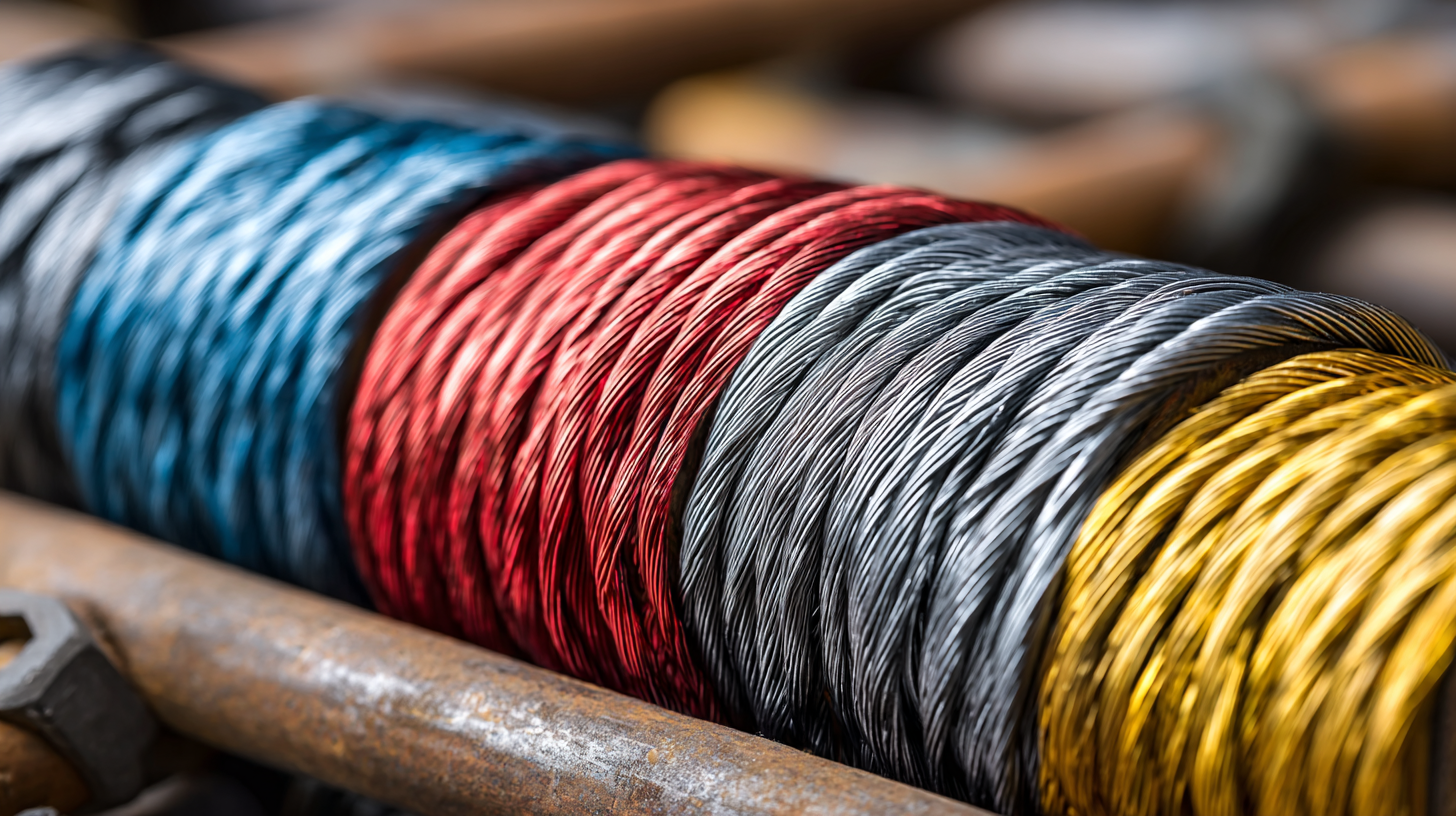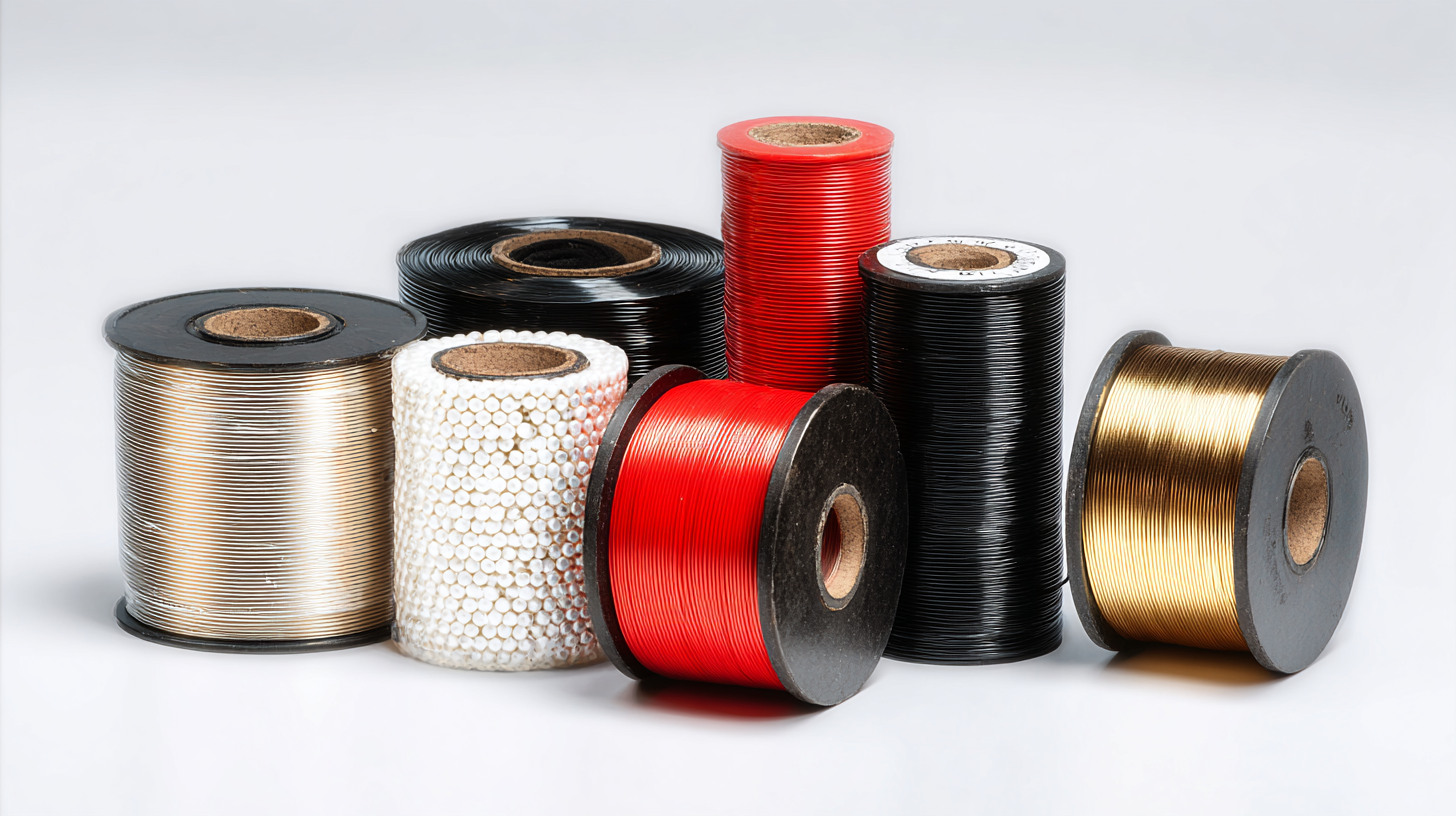15 Best Practices for Selecting High Temperature Wire for Your Applications
When it comes to designing reliable and efficient electrical systems in environments that experience extreme heat, selecting the right materials is crucial.
 High Temperature Wire plays a pivotal role in ensuring that electrical components function optimally, even under challenging conditions where standard wire might fail.
This ultimate guide explores the 15 best practices for choosing the most suitable high temperature wire for your applications, considering factors such as material composition, insulation type, and voltage ratings.
Whether you are working in aerospace, automotive, or industrial settings, understanding these best practices will empower you to make informed decisions that enhance performance and safety, ultimately leading to more durable and efficient systems.
Join us as we delve into the essentials of high temperature wire selection, helping you to navigate the complexities of this critical component in your projects.
High Temperature Wire plays a pivotal role in ensuring that electrical components function optimally, even under challenging conditions where standard wire might fail.
This ultimate guide explores the 15 best practices for choosing the most suitable high temperature wire for your applications, considering factors such as material composition, insulation type, and voltage ratings.
Whether you are working in aerospace, automotive, or industrial settings, understanding these best practices will empower you to make informed decisions that enhance performance and safety, ultimately leading to more durable and efficient systems.
Join us as we delve into the essentials of high temperature wire selection, helping you to navigate the complexities of this critical component in your projects.
Understanding High Temperature Wire Ratings and Classifications
When selecting high temperature wire for various applications, understanding the ratings and classifications is crucial for ensuring optimal performance and safety. High temperature wires are designed to withstand extreme conditions that standard wires cannot handle, often ranging from 200°C to 300°C or higher. Their ability to maintain structural integrity and conductivity at elevated temperatures is a result of specialized materials, such as silicone, Teflon, or glass fiber insulation, which are tailored to operate under severe thermal stress.
Each high temperature wire classification corresponds to its specific application area, including automotive, aerospace, and industrial equipment. These ratings often adhere to standards set by organizations such as UL, IEC, and MIL-Spec, which help in gauging the wire’s endurance to heat, oil, and chemical exposure. Understanding these classifications not only aids in selecting the right wire for your project but also ensures compliance with safety regulations, ultimately enhancing the reliability and longevity of the electrical systems in which they are integrated. Proper evaluation of these aspects will guide engineers and technicians toward making informed decisions that align with their operational needs.

Key Material Considerations for High Temperature Wire Selection
When selecting high temperature wire for various applications, understanding the key material considerations is crucial to ensuring optimal performance and longevity. One of the primary factors to consider is the wire insulation material, as it must withstand extreme heat without degrading. Common materials include silicone rubber, PTFE (Teflon), and fiberglass, each offering distinct advantages. Silicone, for instance, is flexible and durable, while PTFE boasts excellent chemical resistance and thermal stability, making it suitable for high-temperature environments.
Another vital aspect is the conductor material, typically copper or aluminum. Copper offers superior conductivity, making it the preferred choice for applications requiring efficient energy transfer. However, for environments subjected to temperatures beyond 150°C, specialized alloys or coated wires may be necessary to prevent oxidation and ensure reliability. It is also essential to evaluate the wire's voltage rating and the potential environmental factors, such as exposure to chemicals or moisture, which could further influence material selection. By carefully considering these material attributes, you can ensure that your high temperature wire meets the demands of your specific applications.
High Temperature Wire Material Selection Factors
Comparative Analysis of Insulation Types for High Temperature Applications
When selecting high-temperature wire for various applications, understanding the type of insulation used is critical. Insulation materials can significantly impact performance and reliability in extreme conditions. In recent developments, aramid fibers have gained attention for their excellent electrical insulation properties and thermal resistance. While research in aramid materials within our country is still catching up to international standards, their applications in electrical insulation demonstrate promising capabilities. However, the dependency on imported high-performance aramid materials poses challenges for the domestic market.
Comparative analyses of different insulation types reveal that options such as polyurethane and polyimide-coated wires play crucial roles in high-temperature environments. The electric wire enamel market, which includes these types, is witnessing growth driven by the electronics and aerospace sectors. Industries are increasingly focused on enhancing the durability and versatility of insulation materials to meet the demands of advanced applications. As technology advances, continued exploration into insulation types, including ceramics and composites, is essential to ensure optimal performance in high-stress conditions.
Evaluating Temperature Resilience and Performance Metrics
When selecting high temperature wire, evaluating temperature resilience is crucial for ensuring reliable performance in extreme conditions. One of the first metrics to consider is the wire's temperature rating, which indicates the maximum temperature the wire can safely withstand without degrading. This rating typically stems from the insulation material used, with options ranging from silicone rubber to fluoropolymers. Always check the specifications to ensure that the wire suits the specific temperature demands of your application.
In addition to temperature ratings, it's essential to assess the wire's performance metrics under prolonged exposure to heat. Factors such as thermal conductivity, tensile strength, and flexibility at elevated temperatures will impact the wire’s longevity and effectiveness. For instance, wires that maintain high tensile strength in high heat environments will resist deformation and wear over time.
Tip: Conduct thorough tests in simulated environmental conditions to observe how the wire performs over time. This helps identify any potential weaknesses before actual deployment. Another tip is to opt for wires that have undergone rigorous certifications and stress tests, ensuring they meet industry standards for high temperature applications.
15 Best Practices for Selecting High Temperature Wire for Your Applications
| Criteria | Description | Temperature Rating (°C) | Conductor Material | Insulation Type |
|---|---|---|---|---|
| Operating Temperature | Maximum operational temperature under normal conditions. | 200 | Copper | PTFE |
| Short Circuit Rating | Ability to withstand short circuit conditions. | 250 | Aluminum | Silicone |
| Chemical Resistance | Resistance to corrosive substances. | 175 | Nickel-Plated Copper | Teflon |
| Flexibility | Ability to bend without breaking. | 150 | Stranded Copper | PVC |
| Dielectric Strength | Electrical insulation capacity. | 300 | Copper | Polyimide |
Cost vs. Performance: Finding the Right High Temperature Wire for Your Needs
When it comes to selecting high temperature wire for your specific applications, the balance between cost and performance is crucial. According to a report from the Electric Wire & Cable Manufacturing Association, high temperature wire can vary significantly in price, with formulations ranging from $1.50 to over $5.00 per foot depending on material and specifications. Understanding your operational requirements can help you make informed decisions that optimize both budget and efficiency.

Tip: Always consider the wire’s insulation type, as materials like Teflon and silicone rubber offer varying degrees of heat resistance and flexibility. For example, Teflon can withstand temperatures up to 260°C, making it suitable for demanding applications, while silicone rubber typically holds up to 180°C.
Another important factor is the wire's ampacity, which determines how much current it can safely handle at elevated temperatures. According to the National Electrical Code (NEC), adjustments must be made to account for high ambient temperatures, which can significantly impact performance.
Tip: When in doubt, consult the wire's datasheet for detailed specifications to ensure it will meet your needs under specific conditions. Prioritizing these aspects can guide you in selecting high temperature wire that combines performance and cost-effectiveness without compromising safety or reliability.
